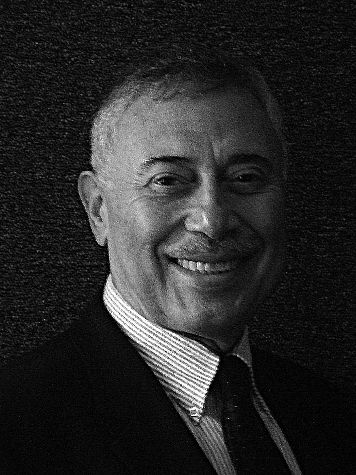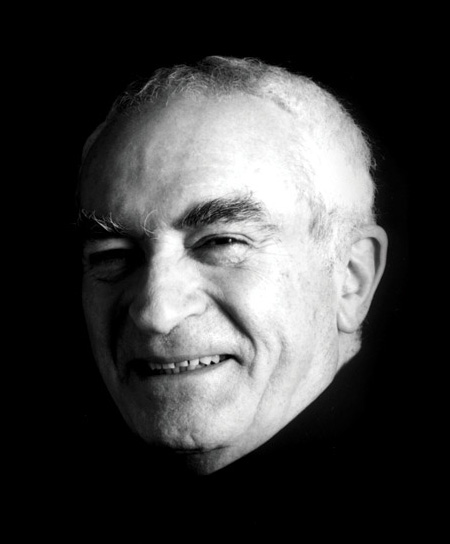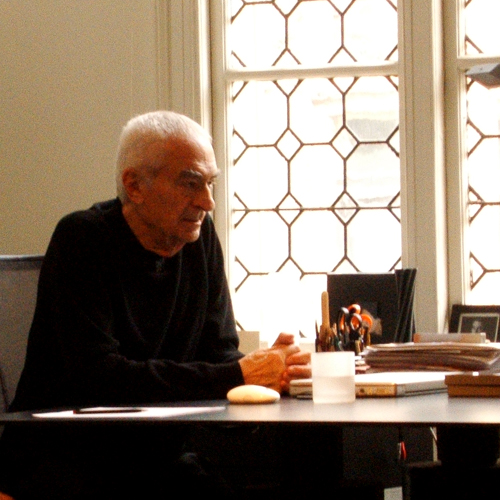<Back to Index>
- Graphic Designer Henry Steiner, 1934
- Graphic and Industrial Designer Massimo Vignelli, 1931
PAGE SPONSOR


Henry Steiner (February 13, 1934) is an Austrian graphic designer, best known for his corporate identity designs. He has created designs for some of the most identifiable brands, such as IBM, Hyatt Regency, Hilton Hotels, Dow Jones, HSBC, Standard Chartered, Unilever, and was commissioned to design the city's bank notes by the Hong Kong government in 1975. Steiner was educated at the Sorbonne and at Yale. In 1964, he founded his own consultancy firm, Steiner&Co, in Hong Kong. Henry Steiner pioneered the expression of identity through branding, particularly in Asia where his skill for incorporating Eastern cultural symbols into Western design has garnered international acclaim. Steiner was included in Icograda’s list of the Masters of the 20th Century in 2002, and was named a World Master by Idea magazine.
The Hongkong and Shanghai Banking Corporation
is world recognized brand for banking, finance, brokerage, and
insurance. In 1984, Henry Steiner developed a corporate identity for the
bank based on its St. Andrew’s cross flag.
Henry Steiner designs banknotes for the Standard Chartered Bank since 1975.
In 2003, Henry Steiner updated the designs incorporating the latest
anti - counterfeiting technology. The notes appear in five denominations
and showcase a hierarchy of aquatic, amphibious, terrestrial, and
celestial creatures. The reverse features Hong Kong’s dynamic harbor
from various time periods.


Massimo Vignelli (January 10, 1931, Milan - May 27, 2014, New York City) was a designer who did work in a number of areas ranging from package design to furniture design to public signage to showroom design through Vignelli Associates, which he co-founded with his wife, Lella. He said, "If you can design one thing, you can design everything," and this is reflected in his broad range of work.
Vignelli worked firmly within the Modernist tradition, and focused on simplicity through the use of basic geometric forms in all of his work.
Vignelli was born in Milan in 1931. As a teenager, he became enthralled with design and befriended many of the great architects of his day. (He sometimes says his youth was spent as an "architecture groupie.") He went on to study architecture at the Politecnico di Milano and later at the Università di Architettura, Venice.
From 1957 to 1960, Vignelli visited America on a fellowship, and returned to New York in 1966 to start the New York branch of a new company, Unimark International, which quickly became, in scope and personnel, one of the largest design firms in the world. The firm went on to design many of the world's most recognizable corporate identities, including that of American Airlines (which forced him to incorporate the eagle, Massimo is always quick to point out). Vignelli designed the iconic signage for the New York City Subway system during this period. Contrary to news reports and lore, Vignelli did not design the Washington, DC Metro Map, which was designed by Lance Wyman and Bill Cannan. Vignelli designed the simple signage and wayfinding system for the DC Metro and was the one to suggest that it be named "Metro" like many other capital city subways. Its original name was a mishmash of various states and transportation groups.
In 1971, Massimo founded Vignelli Associates with his wife, Lella.
Vignelli was involved with filmmaker Gary Hustwit in the documentary Helvetica, about the typeface of the same name. Vignelli also updated his 1972 New York City subway map.
Massimo Vignelli worked in a wide variety of areas, including interior design, environmental design, package design, graphic design, furniture design, and product design. His clients at Vignelli Associates included high profile companies such as IBM, Knoll, Bloomingdale's and American Airlines.
Vignelli participated in the Stock Exchange of Visions project in 2007, as well as publishing the book, Vignelli: From A to Z, which contains a series of essays describing the principles and concepts behind "all good design". It is alphabetically organized by topic, roughly approximating a similar course he has taught at Harvard's School of Design and Architecture.
In January 2009, Vignelli released The Vignelli Canon as a free e-book; an expanded version was printed in September 2010, but the original remained available for download on the Vignelli Associates website. In the introduction Vignelli wrote, "I thought that it might be useful to pass some of my professional knowledge around, with the hope of improving [young designers'] design skills. Creativity needs the support of knowledge to be able to perform at its best."
Vignelli worked with the National Park Service and the design staff
at the Harpers Ferry Center in creation of the "Unigrid System." The
system has been used since 1977 in creation of park brochures in all
national parks locations.
Massimo and Lella Vignelli agreed to donate the entire archive of their design work in 2008 to the Rochester Institute of Technology, near Rochester, New York. The archive will be exhibited in a new building designed by Lella and Massimo Vignelli, to be known as The Vignelli Center For Design Studies. The building, which opened in September 2010, includes among its many offerings exhibition spaces, classrooms, and offices.
“The Vignelli Center for Design Studies will house our comprehensive
archive of graphic design, furniture and objects,” said Vignelli. “Under
the direction of R. Roger Remington, the Vignelli Distinguished
Professor of Design at RIT, the center will foster studies related to
Modernist design with programs and exhibitions on our work as well as
other related subjects. The first one of its kind and size, The Vignelli
Center will position RIT on the international forefront of design
studies. Lella and I are delighted to see our dream taking shape.”
Vignelli died on May 27, 2014 in New York City